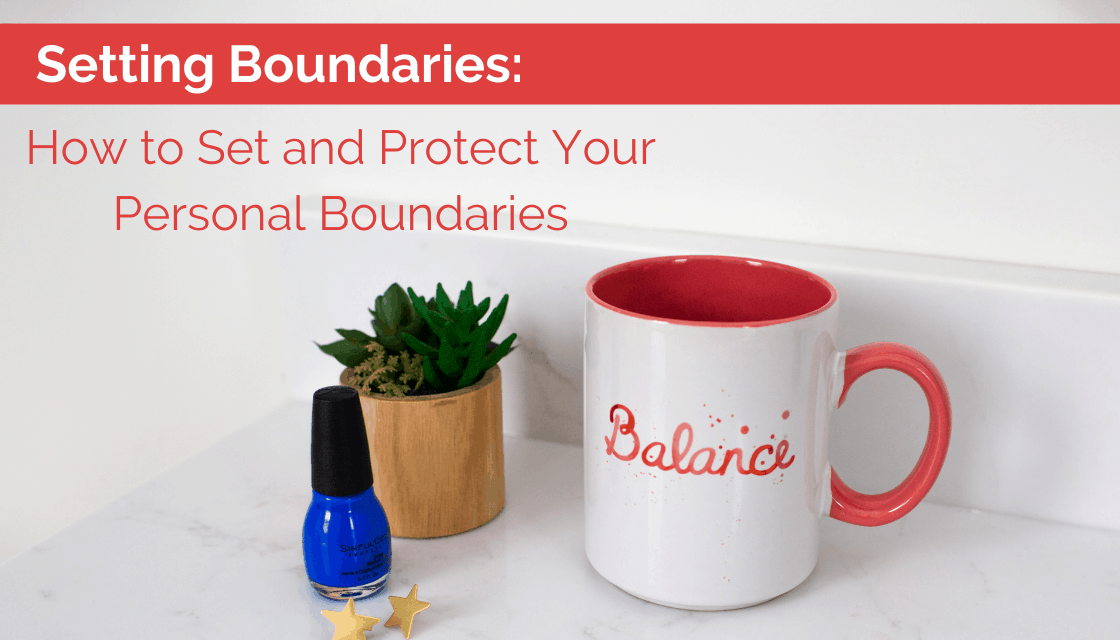
19 Feb Setting Boundaries: How to Set and Protect Your Personal Boundaries

What is a Boundary?
Creating a personal boundary means setting a limit or space between you and those around you, either physically or emotionally. Healthy boundaries are ones that you set in your life and in your relationships that help you protect your mental well-being.
The Benefits of Setting Boundaries
Setting boundaries is a form of self care. It helps you to clearly define relationships and the limits within them, which is important for your mental health. Setting boundaries can benefit you by:
Increasing your self-esteem
Your self-esteem influences the choices you make, how you react to certain situations, and how you prioritize your life. Having high or strong self-esteem is vital to your mental health and well-being. Boundaries help others to see the level of respect you have for yourself, which in turn leads them to treat you in a way that feeds positively into your self-esteem.
Conserving your emotional energy
Just like physical energy, emotional energy does not come from a never-ending source. To rebuild our physical energy when it is depleted, we sleep, and to conserve our physical energy, we relax or take days away from the gym. Setting boundaries is the equivalent of doing these things for your emotional energy, and those boundaries allow you to take a break from doing the emotional heavy-lifting that can be present within certain relationships.
Promoting independence
Setting boundaries can be difficult, especially if you receive pushback from the recipient of the boundaries. However, the more you set them and stick to them, the easier it is to continue setting them. By setting boundaries, you are identifying your needs in a relationship, and when your needs are met, you are able to exist more independently within that relationship.
How to Set Boundaries
Setting boundaries is personal, and what boundaries look like varies from person to person, depending on their specific needs. For example, the boundaries you set with your parents may not look like the same boundaries your siblings set with them, or the boundaries you have regarding your children may not be the same boundaries your friends and family have for theirs.
Be Clear
It is essential to clearly communicate the boundaries you set. You don’t want to give mixed signals about what you need or what the relationship should look like moving forward. If it is within your boundaries, explain why this is what you need and how it will help the relationship.
For example, if you need your spouse to keep an eye on the kids every Sunday for two hours so you can prepare for the week ahead, make sure you tell your spouse and explain how having that time helps you for the rest of the week.
Be Assertive
When setting boundaries, it’s important to be assertive. There are certain people who will not like that you are taking control of the relationship or putting your own mental health and needs first. It takes courage to address your needs with others. Once you recognize what those needs are, it’s important to stick to them, even if they’re not well-received or understood.
For instance, if you’ve told your parents they can only come over for dinner one night a week, then you should not give in if they ask you to make an exception. A polite way to handle this could be to say something like, “I understand that you’d like to come over for dinner on Sunday, but we had dinner together on Wednesday and I already have other plans.” The key is to be kind, but firm.
Say “No”
You’re allowed to say no without offering an additional explanation. If something is outside of the boundaries you’ve set or isn’t in line with what you’re trying to achieve, say no. It may be uncomfortable, but saying no to the things that don’t serve you is a great way to stick to your boundaries and to let others know that you’re serious about them. This is also a good way to avoid spreading yourself too thin or overcommitting your time.
Saying no is important in both your personal life and your work life. If your plate is already full at work, don’t agree to take on more at the cost of your mental health. You should also not feel obligated to say yes to every social occasion unless you actually want to go.
Use Artful Agenda to Help You Set and Define Boundaries
Setting boundaries for your time and energy is a good way to begin. Here are some examples of how Artful Agenda can help you:
- I need to stop responding to every call and text immediately, especially if it is not urgent. To do this, I will turn my phone on Do Not Disturb so I can be productive. – You can use reminders in Artful Agenda to remember when to turn Do Not Disturb on.
- I will make a list of the boundaries I have set in order to remind myself why they are important to my mental health. – The Custom List in the Day view in Artful Agenda is perfect for this.
- I will set aside specific times to spend on the phone with my parents so they don’t expect me to drop everything to constantly talk to them. – Artful Agenda is the perfect place to block out specific time on your schedule to get certain things done.
Start using Artful Agenda to help with your boundary setting today!



No Comments